Ali Ferguson’s inspiration comes from heirloom objects, everyday events, or even chance conversations with neighbours. As an artist, embroiderer and collector of stories, Ali has particular fascination for the stories of ordinary people. Snippets of daily life get her imagination going, perhaps a random observation or the discovery of a well-worn treasure. Her ‘threads of thought’ begin to grow, like a network of connected roots feeling their way into the world.
Intrigued by Locard’s exchange principle, the forensics concept whereby every contact results in a physical exchange, Ali explores the idea that each human contact will leave a trace of your emotional self, and collect a trace of the other individual’s emotions. She represents these emotional connections using delicately pieced and hand stitched fragments of old garments, handwritten letters, haberdashery items and other vintage elements.
Ali’s studio is the Purple Thread Shed, found in the garden of her home near Edinburgh, Scotland. Her work has been featured in magazines and books including Embroidery magazine, Textiles Transformed by Mandy Pattullo (Batsford, 2020). Ali has taught throughout the UK, in France, Australia & New Zealand, where she indulges her passion for inspiring others to stitch their own stories.
In this interview we take a look at Ali’s work (Hi)Stories Uncovered, where the imagined stories of her subjects become interwoven with the histories of her source materials. Ali shares the thought process from initial spark of inspiration to how she developed her ideas and sourced her materials. These exquisite works give a glimpse into the lives of characters found in her collection of old letters dating from the early 1900s: Gillie the school master, Dorothy the teacher, and a mother writing to her child.
Name of piece: (Hi)Stories Uncovered
Year of piece: 2016
Techniques and materials used: 126cm x 92cm, Deconstructed garments, silk organza, inkjet printing, abaca tissue paper, hand stitch
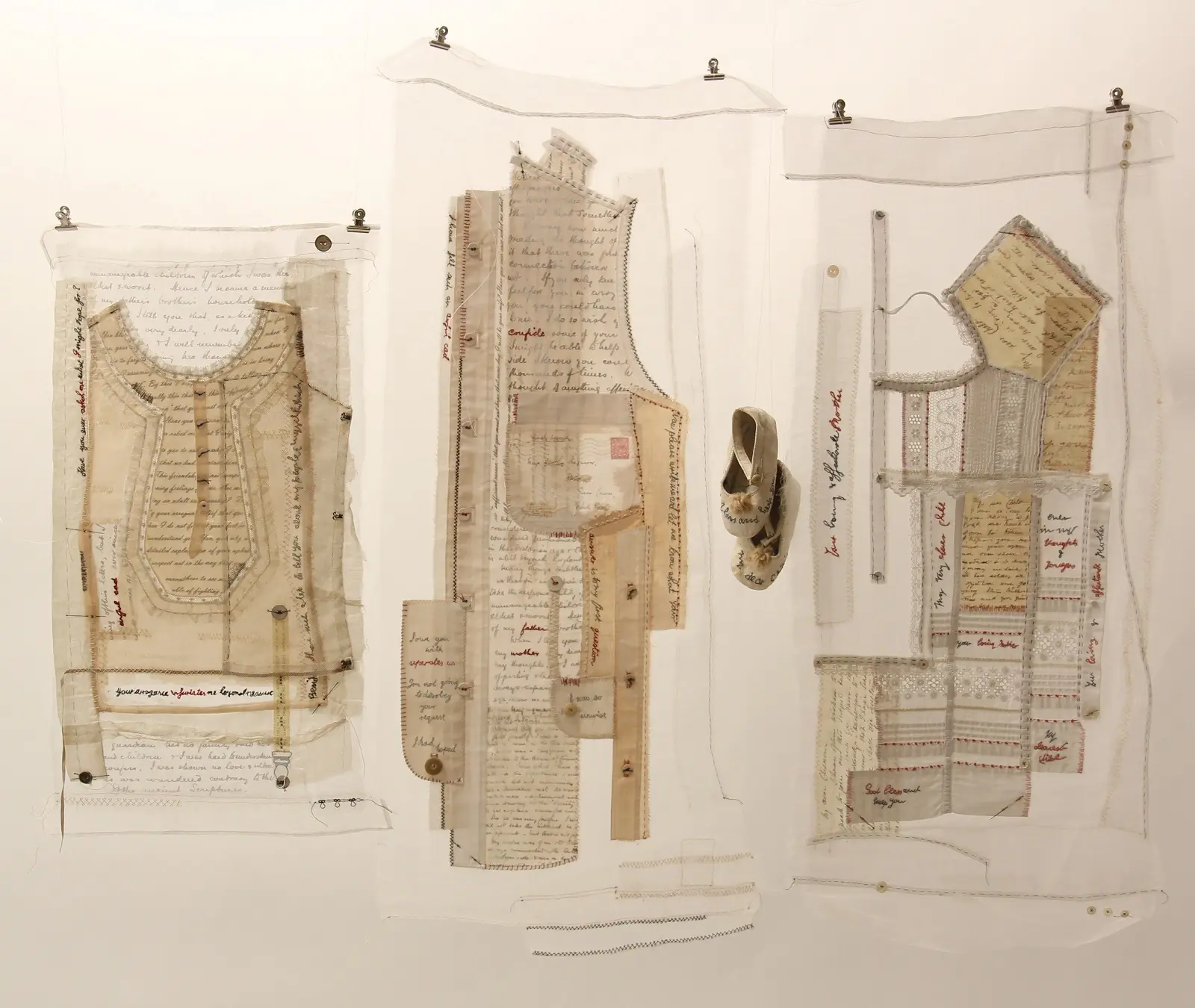
Traces of emotion
TextileArtist.org: How did the idea for the piece come about? What was your inspiration?
Ali Ferguson: The original inspiration came quite by chance. I was half-listening to the radio and something sparked my interest. I took note of the phrase ‘Locard’s Exchange Principle’. Months later, I came across a little note that I’d made on my mobile phone and looked it up.
According to the website forensichandbook.com:
“Locard’s exchange principle is a concept that was developed by Dr. Edmond Locard (1877-1966). Locard speculated that every time you make contact with another person, place, or thing, it results in an exchange of physical materials. He believed that no matter where a criminal goes or what a criminal does, by coming into contact with things, a criminal can leave all sorts of evidence, including DNA, fingerprints, footprints, hair, skin cells, blood, bodily fluids, pieces of clothing, fibers and more. At the same time, they will also take something away from the scene with them.”
Of course, this is a familiar concept to anyone who has ever watched crime drama on television! But seeing it written down in this way got me thinking. If we accept that there is an exchange of physical traces, then there must also be an exchange of emotional traces. In my mind I read it as, “Every time you make contact with another person, place or thing, it results in an exchange of emotional materials.” Each contact will leave a trace of your emotional self behind and also carry forward a trace of another individual’s emotions.
I went on to consider that if this evidence of contact was actually visible, what mark or evidence would emotions leave behind, and how could I symbolise this?
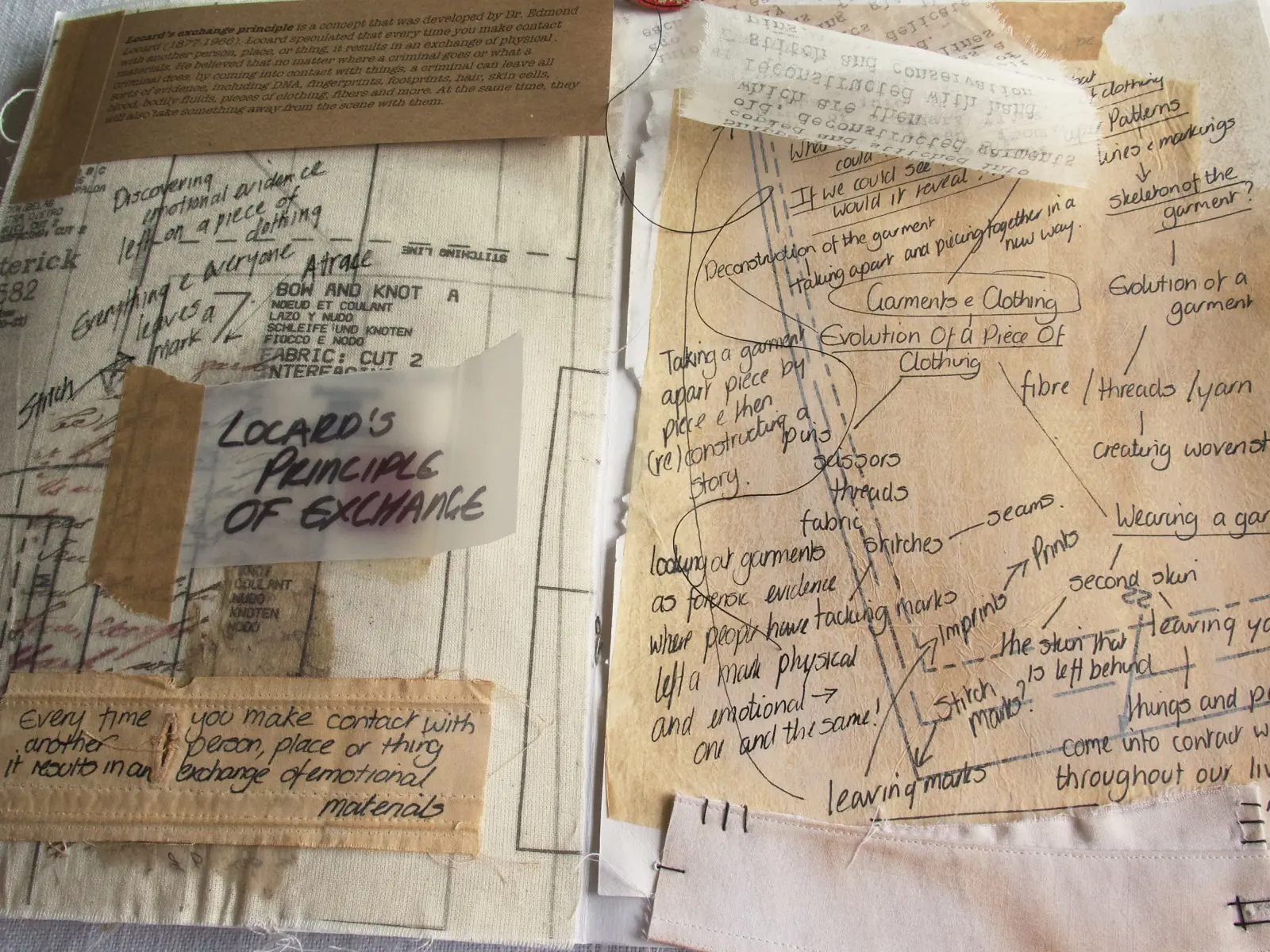
What research did you do before you started to make?
I didn’t do any research as such. However, once a concept like this starts to form in my mind, I explore my thoughts by mind mapping. During this process I capture my thoughts by writing them down, and ideas start to form of how I could take some of these concepts forward into textiles and stitch.
I decided to work with old garments, taking them apart piece by piece. My aim was to reveal imagined emotional evidence left behind by some person who had touched the wearer in some way.
I’m often inspired by words and text from strangers’ letters. I feel that a handwritten letter captures the emotions of the writer at the exact moment of pen hitting paper, and because of this, I decided to use words from letters as my emotional evidence.
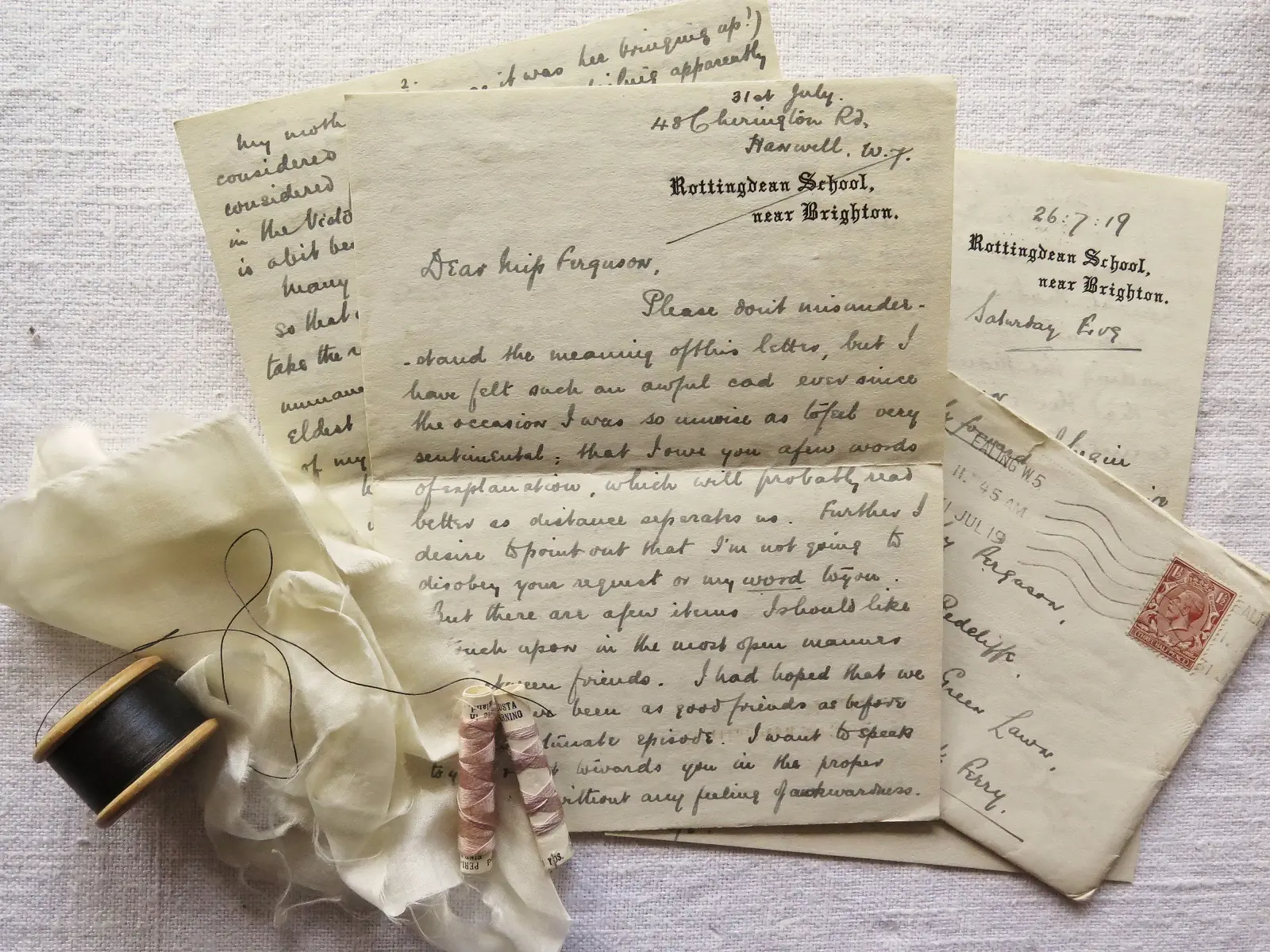
The art of letter writing
Was there any other preparatory work?
I wanted to create three hanging panels for this piece, each carrying the emotional evidence of a different person.
After hunting through my collection of letters for inspiration, I decided that my first piece would give a glimpse into the life of Gillie, a schoolmaster from Brighton. I have two letters dated July 1919 from Gillie addressed to Miss Dorothy Ferguson who was a teacher at the same school. I found these treasures on eBay several years ago; the letters captivated me from the outset, particularly this opening line in one letter:
“Please don’t misunderstand the meaning of this letter but I have felt such an awful cad ever since the occasion I was so unwise as to feel very sentimental.”
I love the fact that I only have two letters and don’t know more. There is enough information in the letter to find a lot more out about Gillie, but I’ve never been tempted. I love a little glimpse into a life but don’t wish any more than that.
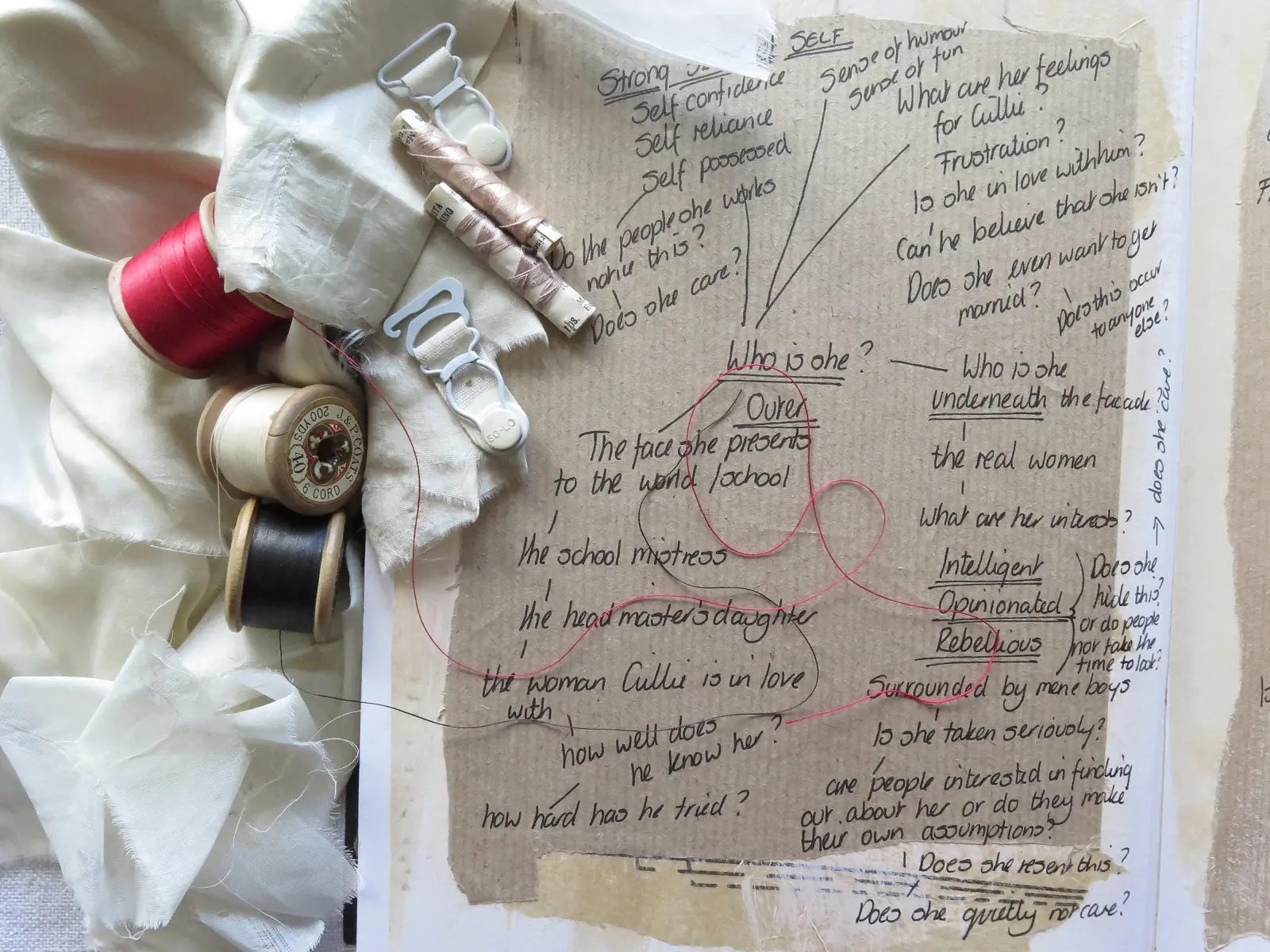
For my second panel, I decided to write a response from Miss Dorothy. I don’t have any letters from Dorothy, so I have no idea of her actual response or how the story turned out. I very seldom make up a story completely, and I am intrigued by the fact that I became so involved in Gillie’s letters that I wanted to develop a story for them. In my imagination Dorothy was rather feisty and would not be won over easily!
The emotional evidence for the third and last piece in this installation comes from a completely unconnected collection of letters from a mother to her child. Written in 1907, in tiny spidery handwriting, they are very difficult to decipher but so very full of emotion.
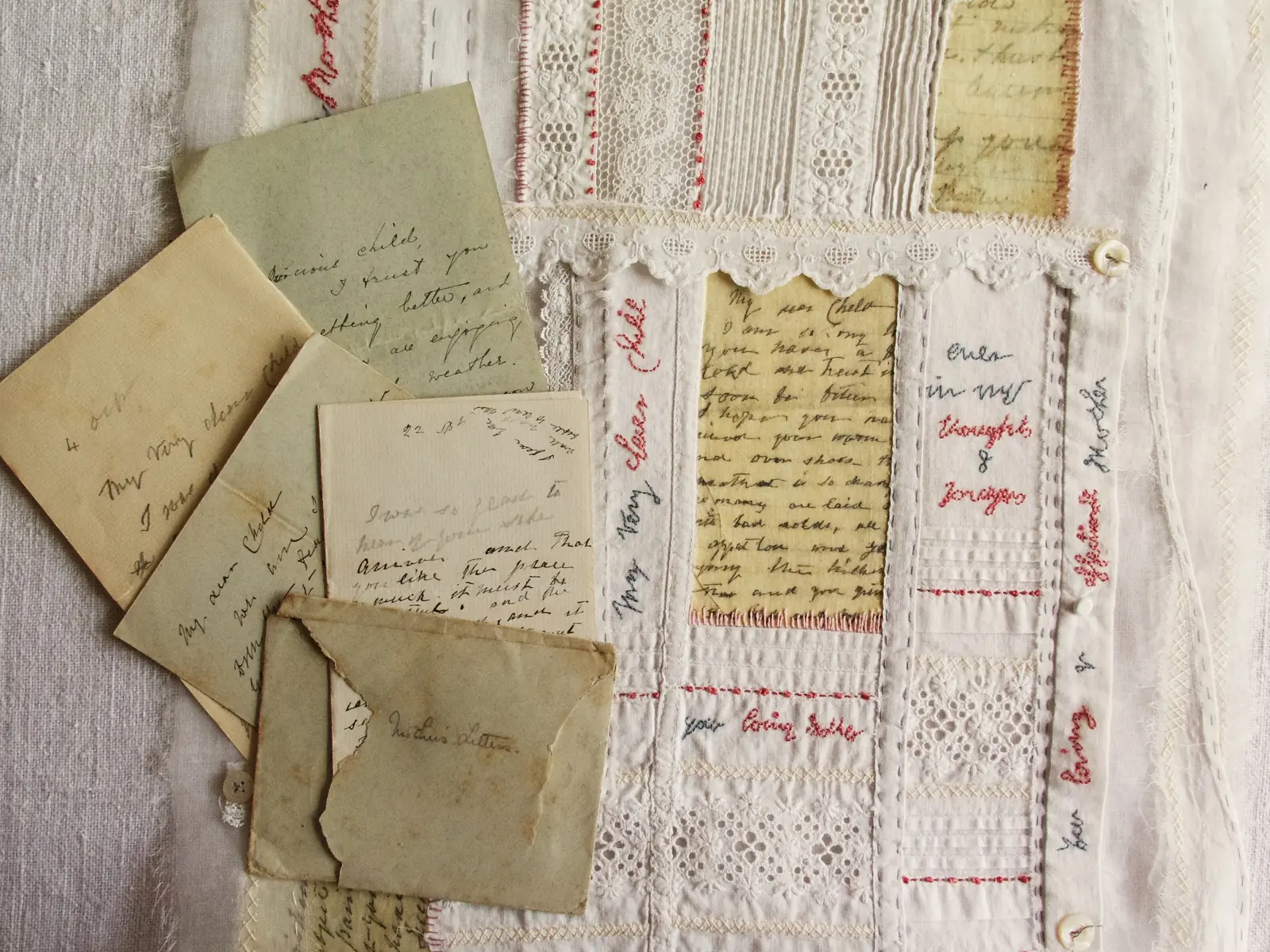
What materials were used in the creation of the piece? How did you select them? Where did you source them?
I decided to work with old garments for this project. I often use items of clothing as a way to tell stories of people.
As Gillie was a schoolmaster, I decided that his story would be told through a white shirt and collar. I used a white shirt that had been given to me by a friend who had found twenty-two identical white shirts in her father’s wardrobe when he died. I collect old shirt collars, so I chose to use one of those from my collection.
For Dorothy’s story, I found two separate antique silk dress panels. I love collecting old garment pieces and often squirrel them away until the right project comes along. This was layered onto a background of old silk that came from a dress lining, that came from a friend’s mother’s house; the silk panel clearly been cut off when a dress was shortened.
For ‘My Dear Child’ I chose to use a hand-stitched antique baby gown, possibly a christening gown, with beautiful tucked and embroidered details. I also decided to use a beautiful pair of antique kid leather baby shoes to hang alongside the baby dress. There is something about these tiny little shoes that reflects the vulnerability of the letters.
I wanted the overall appearance of the piece to be rather ethereal, so I chose to work with beautiful old and very delicate silk organza as my background fabric. I also used abaca tissue paper.
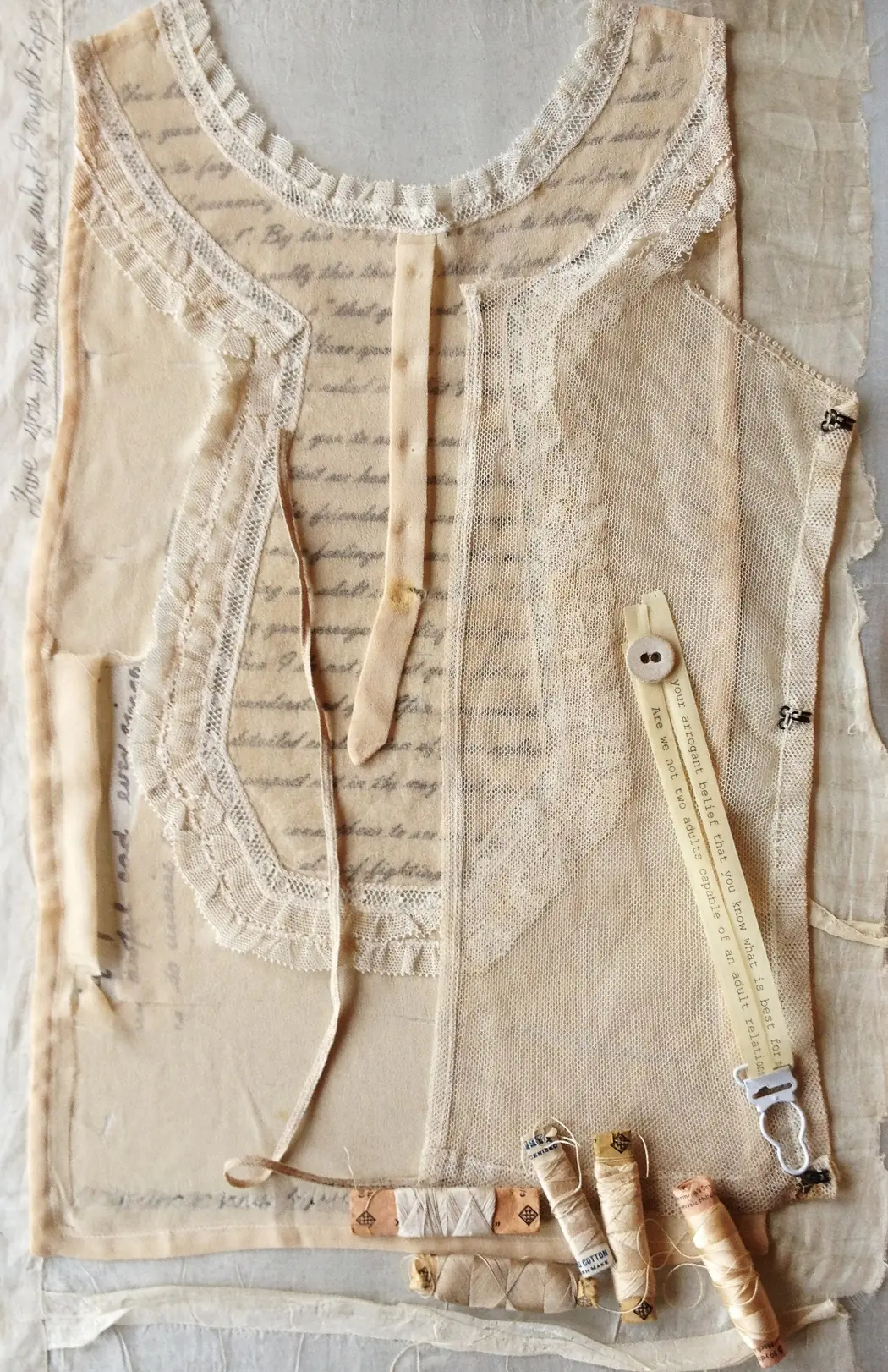
Deconstructed garments
Take us through the creation of the piece stage by stage
I worked on each of the three panels individually, starting with Gillie, using a similar process for all of the panels. I started by deconstructing the garments. Like a forensic examination, I rather liked the idea of taking the clothing apart piece by piece and then (re)constructing a story. I painted Gillie’s shirt and collar with gesso and walnut ink in places to knock back the stark white.
Then I printed text from my letters onto abaca tissue paper and then applied this in various places on my garments, following the shape of the garment pieces. On some pieces, I traced handwriting from my letters and on others I wrote it freehand, to stitch later.
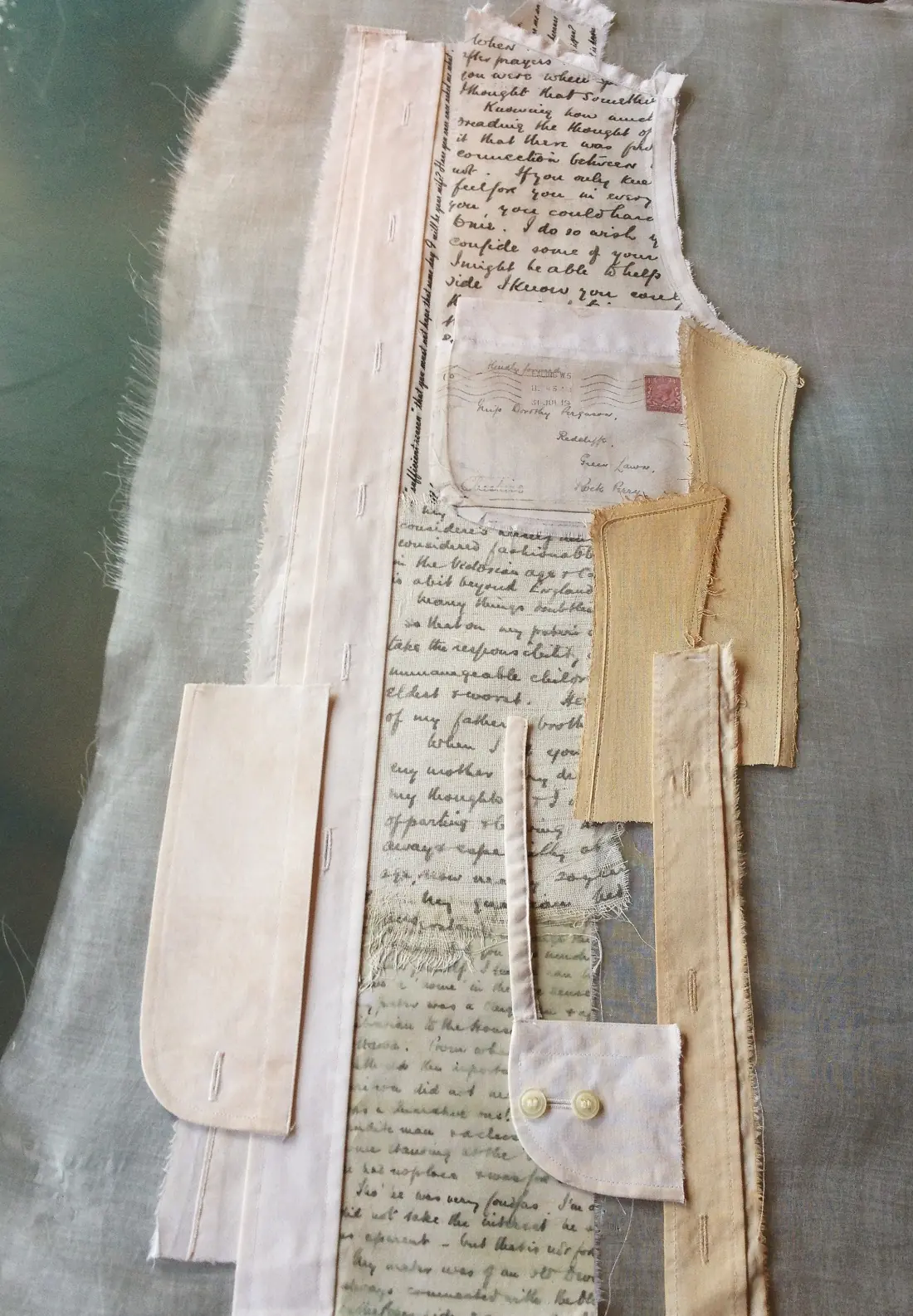
I layered all my garment pieces onto the background organza, attaching them with Bondaweb before stitching. I am always inspired by the shapes of garment pieces and find the act of rearranging and placing each section to be very engrossing and pleasing. I don’t think I’ll ever tire of it!
I stitch intuitively but tried to be true to the handwriting script. Using a very limited colour palette of threads in each panel, black, cream and ‘Turkey red’, in combination with a limited range of stitches.
As well as the stories and energies of the authors and recipients of the letters, these pieces are also imbued with the stories of the garments themselves and the real wearers.
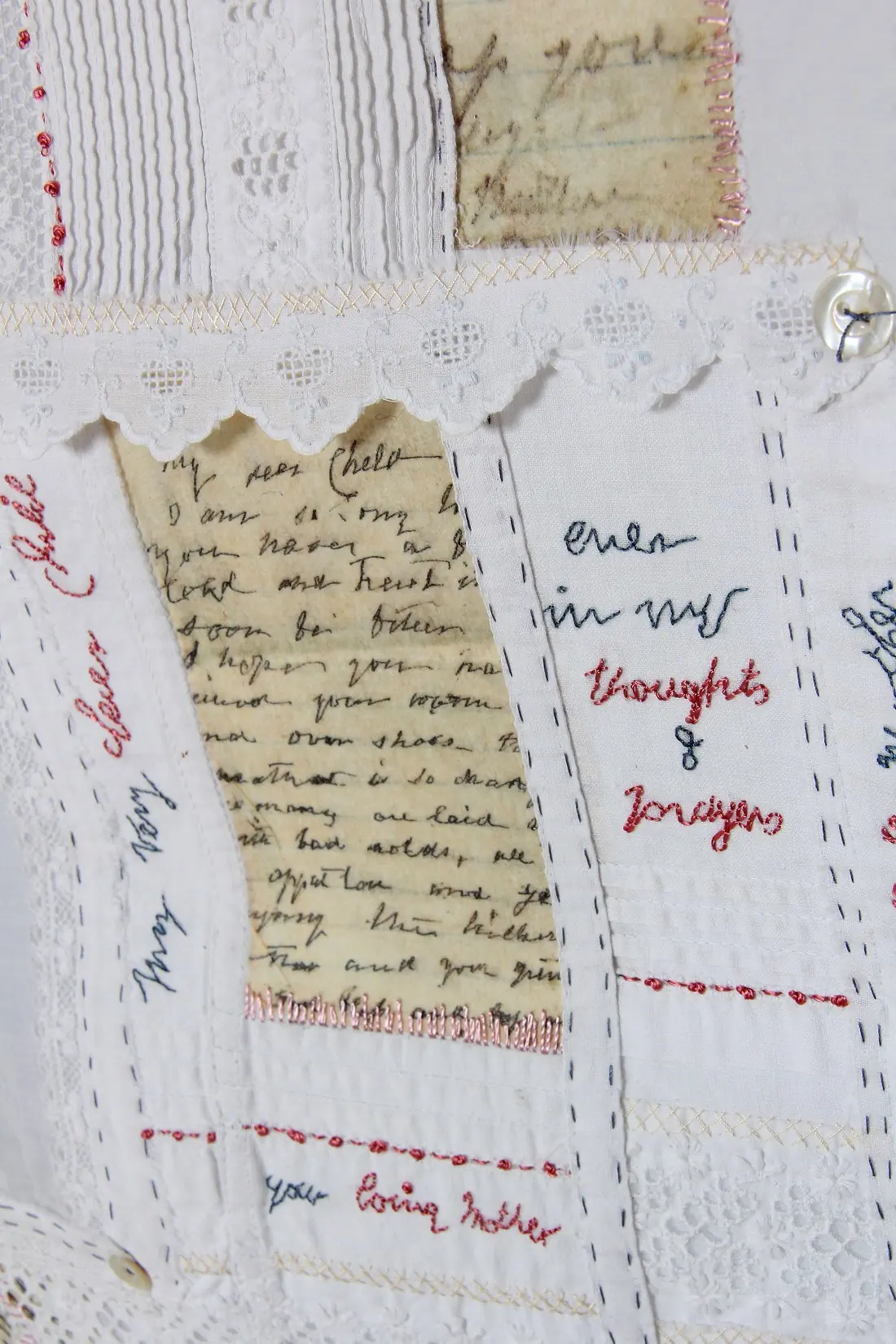
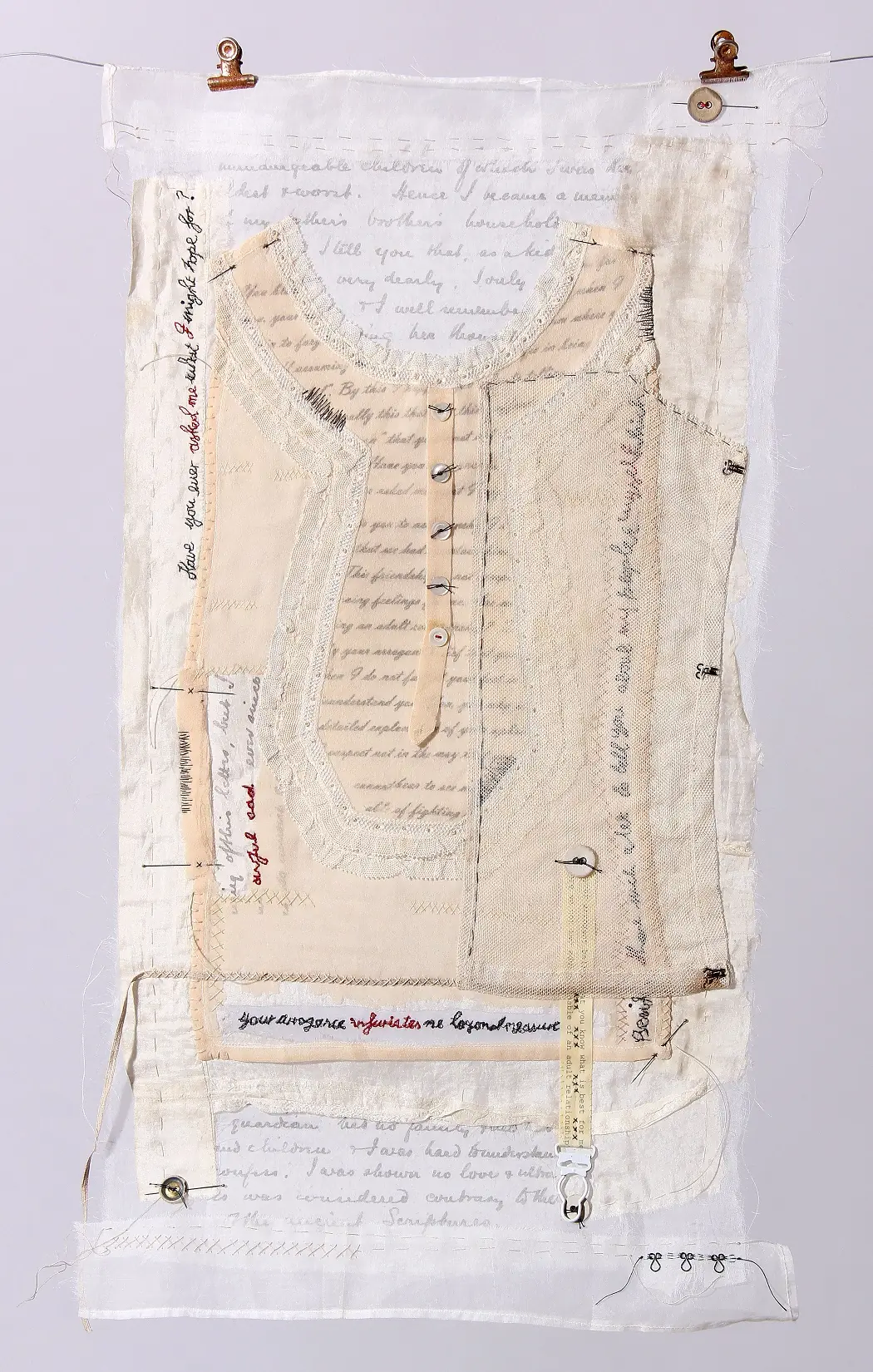
And, of course, I add my own emotional energies as I make my own marks. I picture these energies entangling and interacting, becoming one with each other. I rather imagine this to be much like how the energies of any group of strangers will intermingle and interact with each other, often completely unnoticed but a connection is made.
In my mind this takes me back to Locard’s principle of exchange, where “every time you make contact with another person, place, or thing, it results in an exchange of physical materials”. This concept of an exchange of emotional energies will keep me inspired for a long time to come.
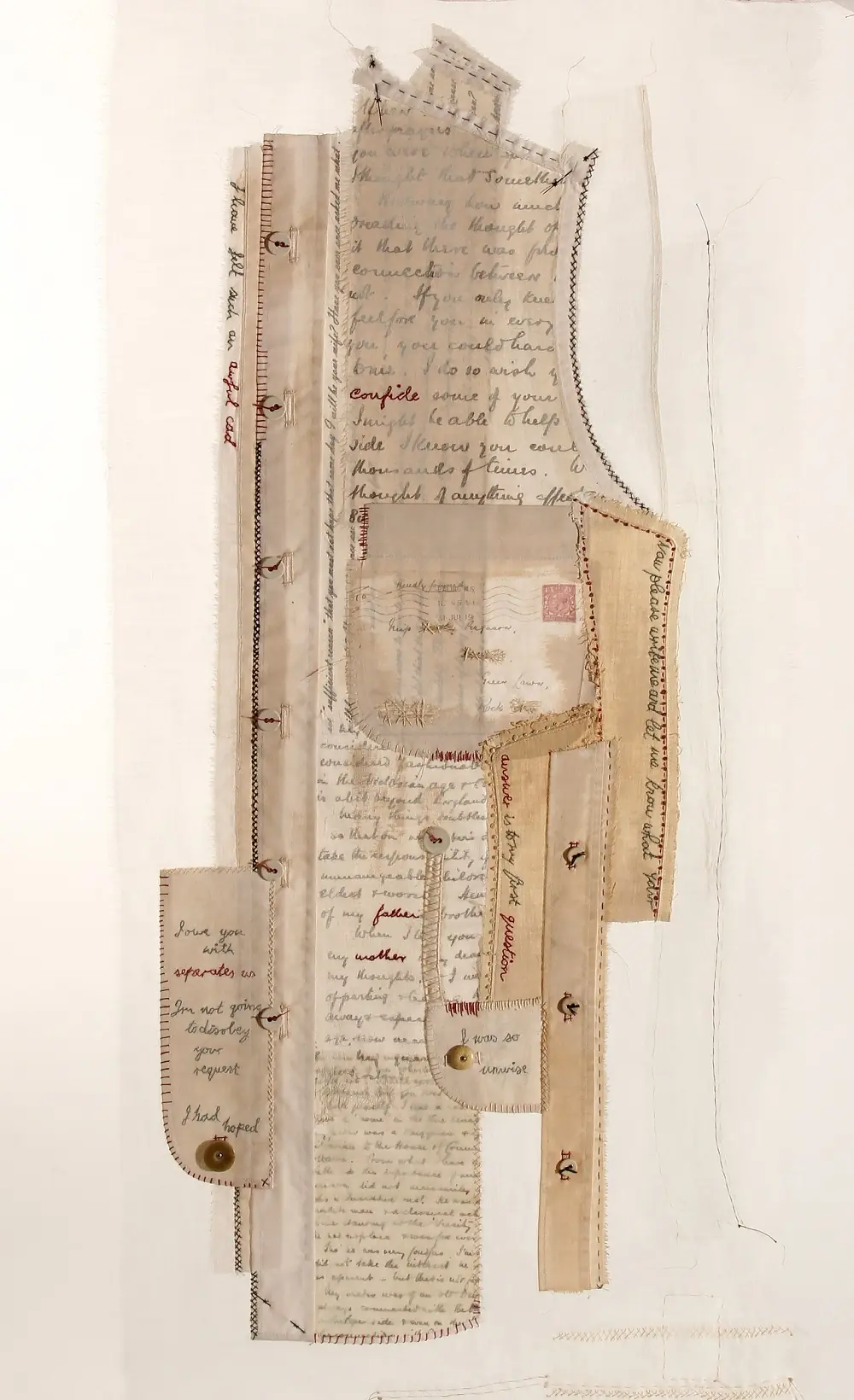
What journey has the piece been on since its creation?
This piece was first exhibited with Edge Textile Artists, Scotland as part of their ‘Strands of Time’ exhibition at the Edinburgh Palette in 2016. The work was selected for ‘Excellence In Fibers’ and it was exhibited at San Jose Museum of Quilts & Textiles in 2018. It was also featured in Fiber Art Now magazine (Winter 2017). Gillie’s Shirt is included in ‘Textiles Transformed’ by Mandy Pattullo (Batsford, 2020).
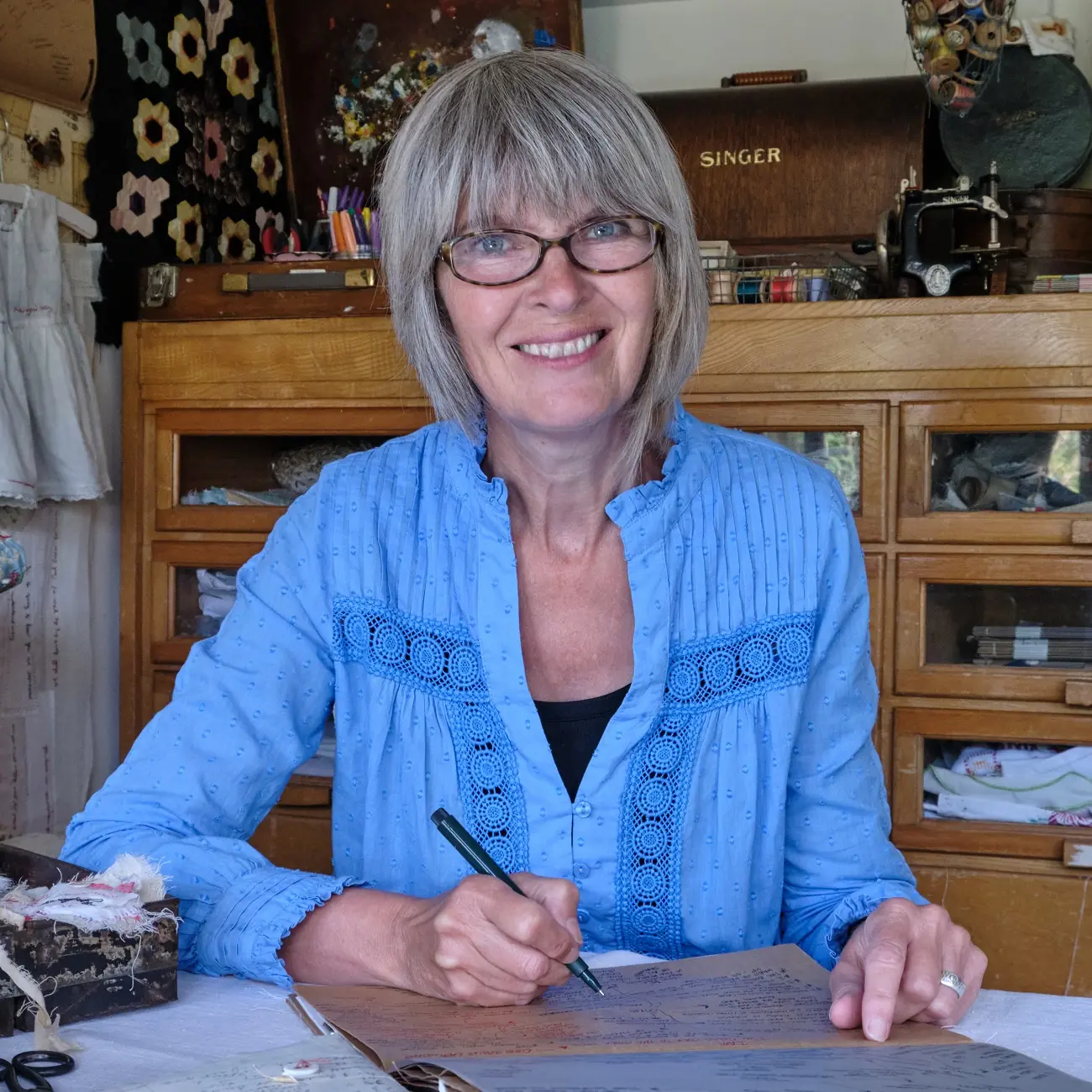
For more information visit aliferguson.co.uk
Did Ali’s work inspire you to stitch your own stories? If so, then let us know by leaving a comment below.
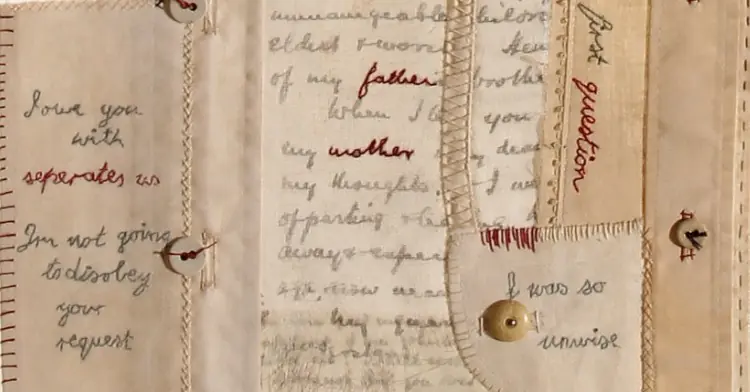

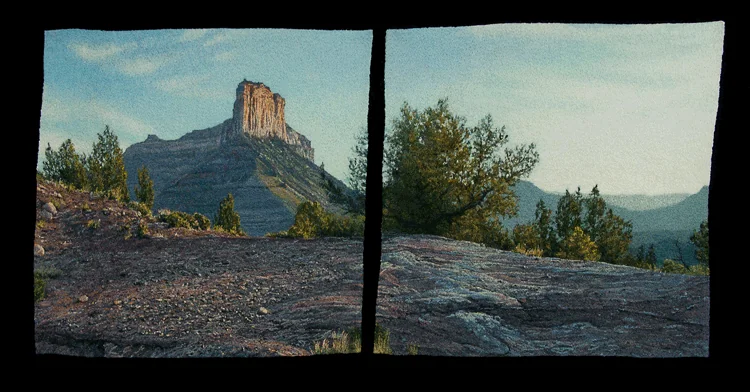
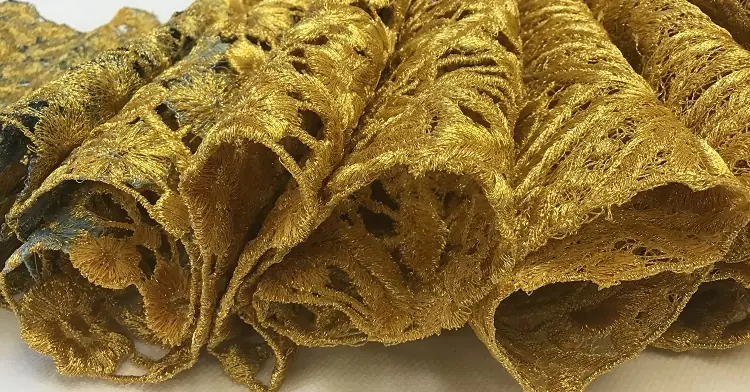
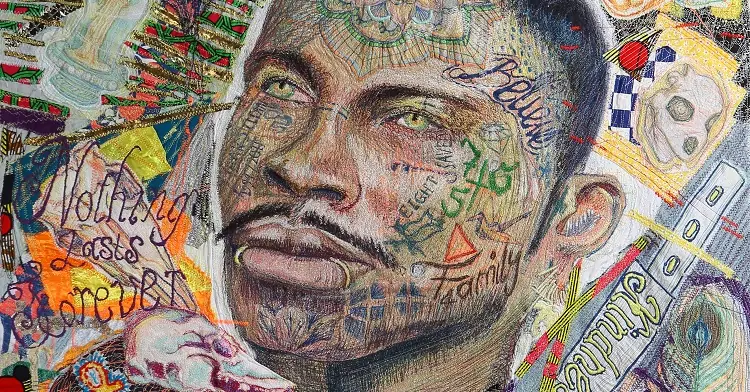
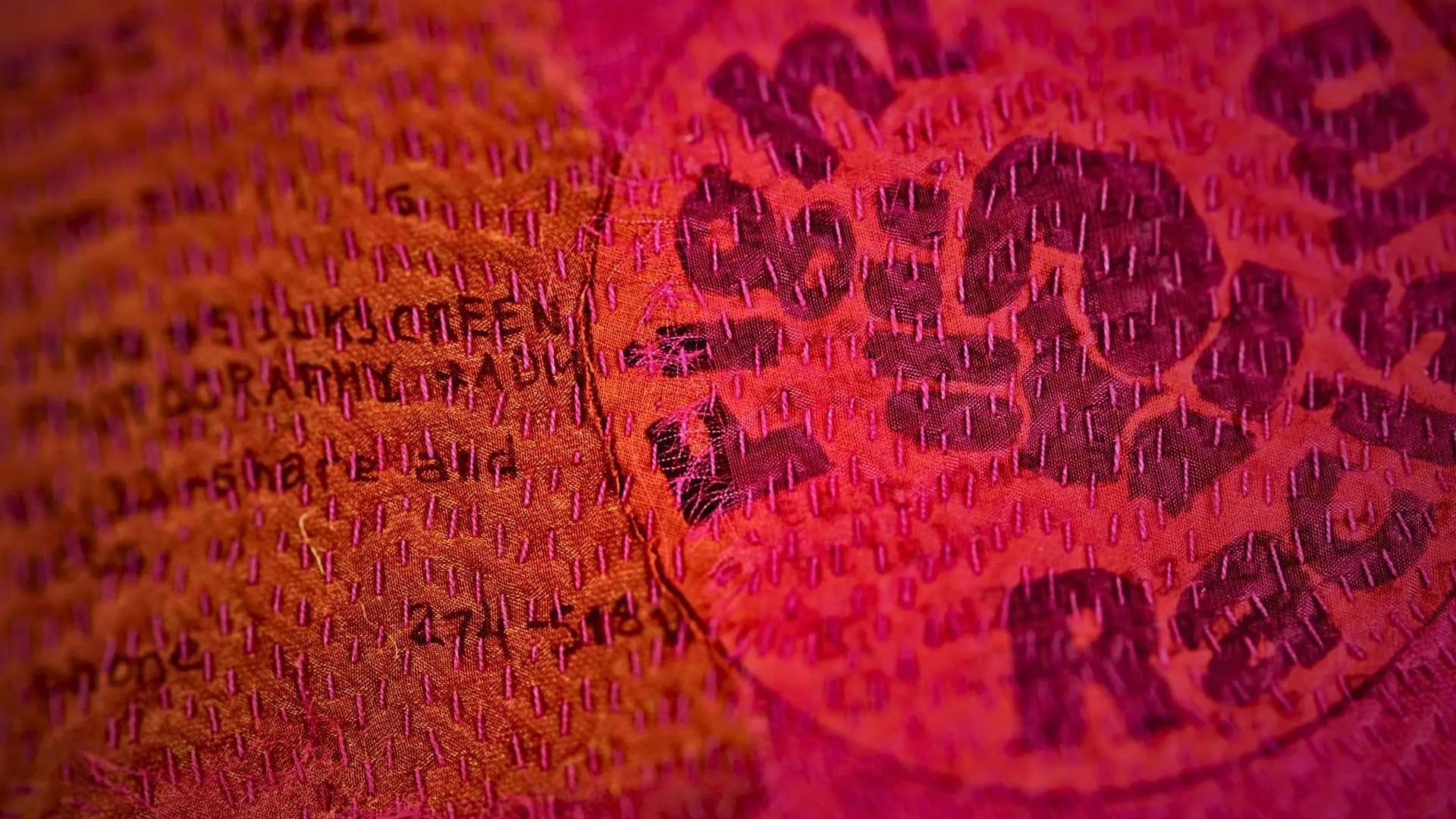
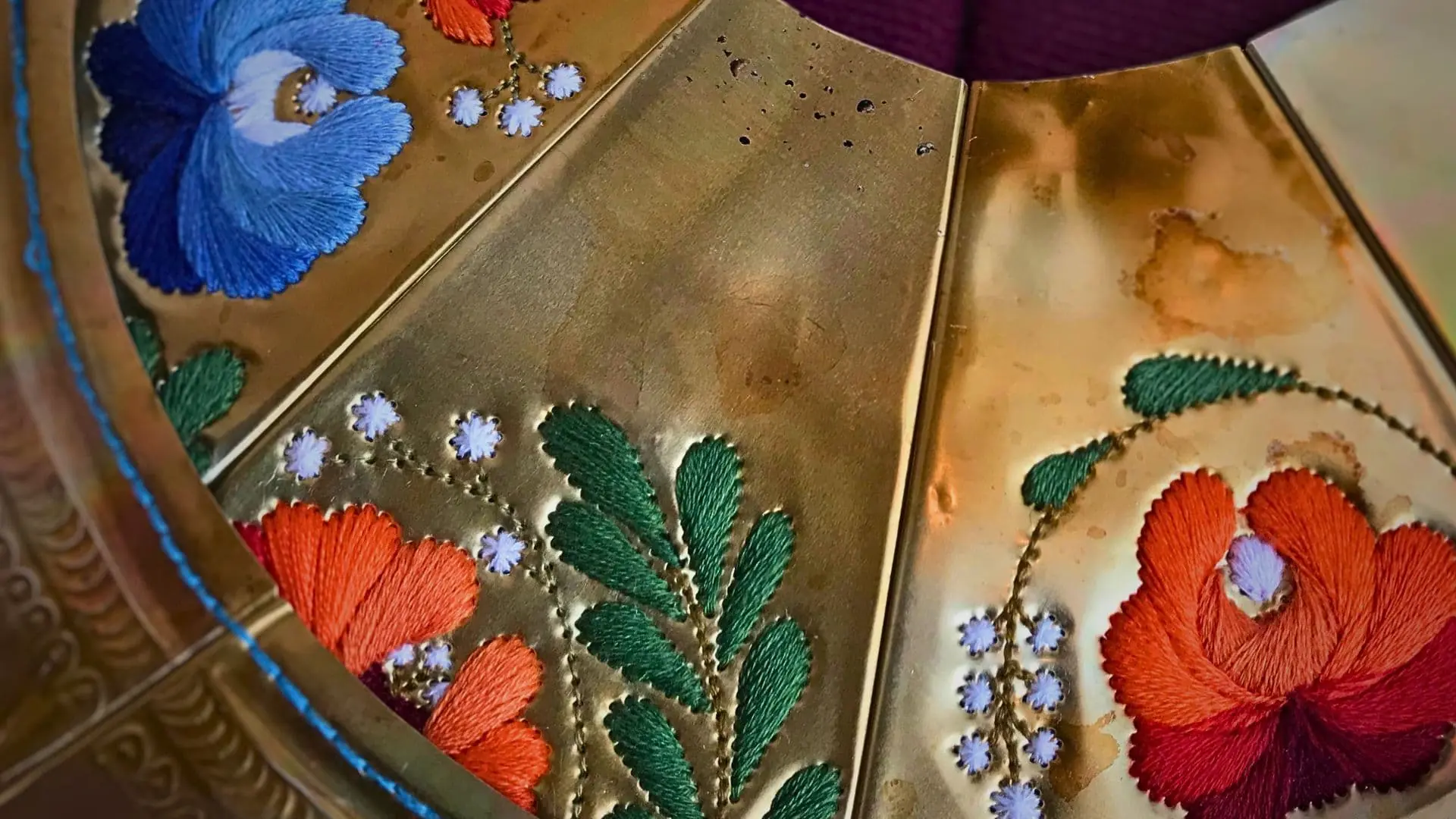
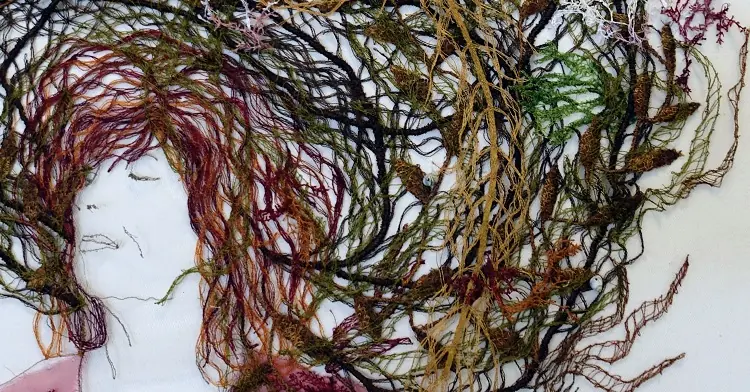
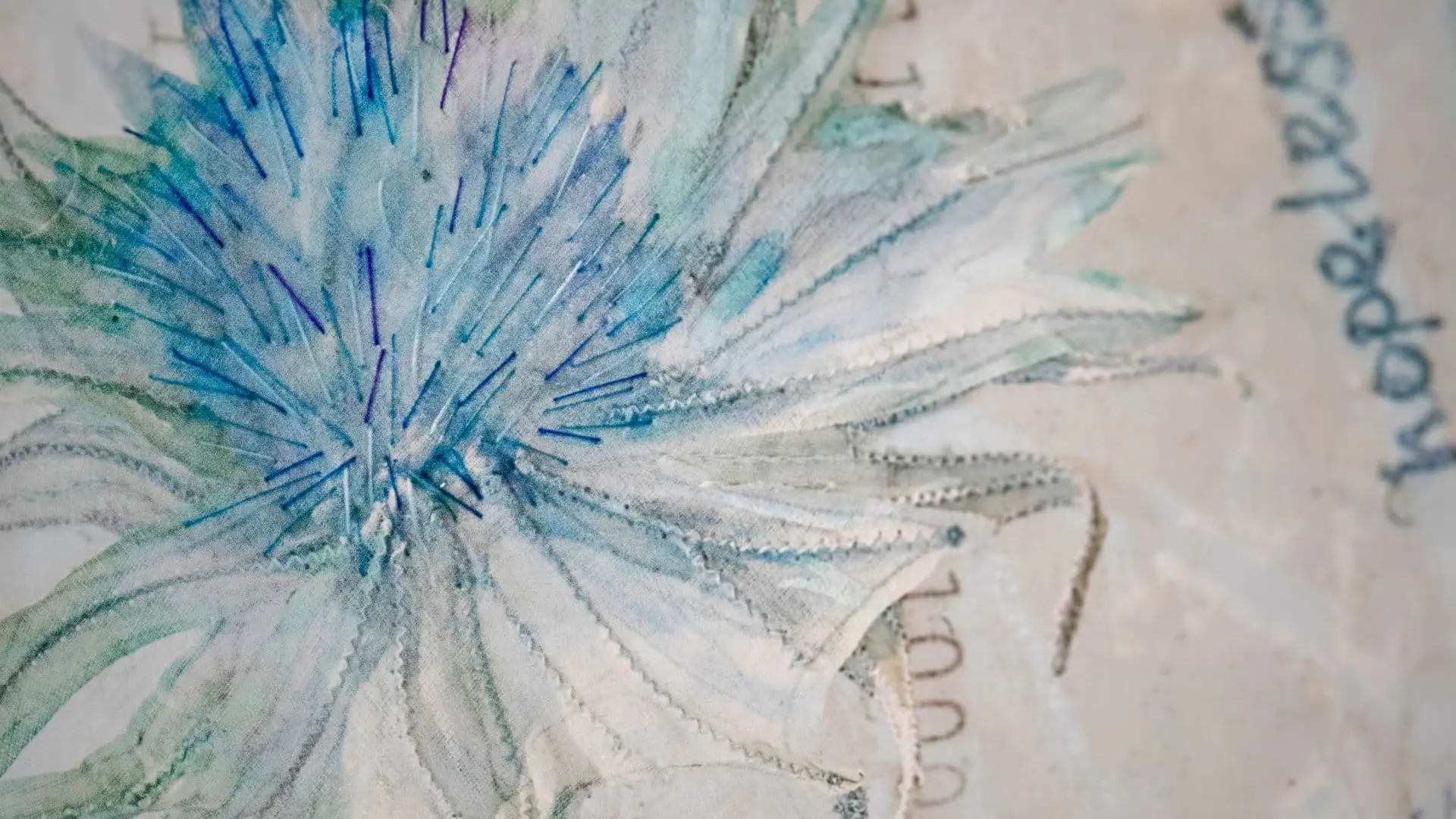
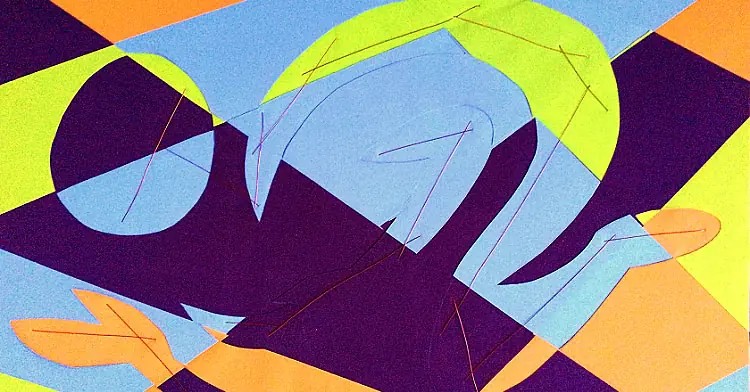
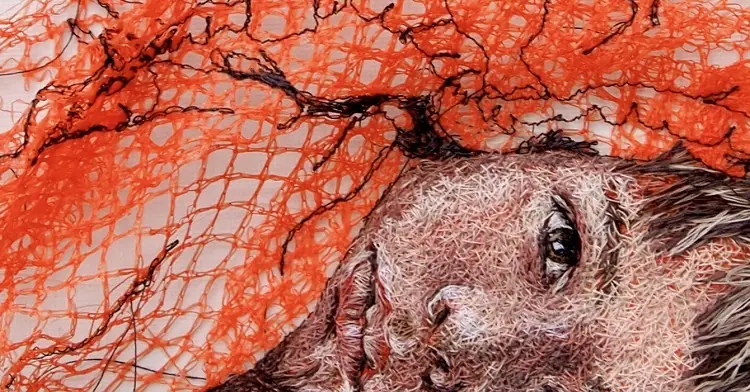

16 comments
Elma Harder
I first encountered Ali through stitch club and was truly inspired by how she works and how she never tires of it. I try to use some of her techniques in my work. The stores her pieces tell are truly engaging.
Jennifer Williams
What a great inspiration for older bits and pieces of family members. So clever and such a sense of time with love and fragility. Thanks for the feature.
Ali Ferguson
So glad you feel inspired Jennifer and thank you so much for your lovely comment. Ali
Kate Taluga
What a wonderful piece illustrating your process of work. I have had an apron in my closet that I love but have never worn. I can see it now being processed into art with the purpose of telling the stories of the women who wore it. Thank you. It is just too beautiful to hide in a closet.
Raquel Figueroa Mendoza
Me encantó el relato y la creación de las prendas que ha hecho yo vivo en Perú y estaba pensando hacer una pequeña obra en yute que se usa aquí para hacer sacos de arroz y otras cosas voy a ver que puedo crear que también lleve escritura nose si acá tenga tanta acogida como en Europa porque nosotros tenerlos telares con hilos que pueden narrar toda una historia pero esto me emociona más gracias por publicar los trabajos de Ali
Ali Ferguson
Oh I love your idea of using jute to tell a story Raquel and the idea of stories being woven. Perhaps bags could also be used in some way . For me these three things would be the starting point of an exploration. I wonder where you will end up – how exciting!!
Wendy Sanderson
, just read my emails. She is teaching. I’m absolutely delighted.
Ali Ferguson
I’m so glad that you are inspired Wendy – it is such a beautiful combination isn’t it? I’ll look forward to ‘meeting’ you in Stitch Club – I’m sure you’ll love the workshop.
Ali
Wendy sanderson
What fabulous and inspirational work. My favourite combination , words and stitches. Has Ali been approached to teach for textile artist ? I’m sure her work would be very popular.
Olga van Dijke
It certainly has strenghtened my idea -starting years ago- of making a work from the exchange of letters, faxes (from 30 years back and fading on the thermal paper) with my daughters while I was working in an office.
Ali Ferguson
Time to start playing around with the idea Olga. I LOVE the idea of using your personal faxes – a real statement of the time as well as the things that were going on for you both. How exciting – do it!!
Ali
Barb Goldstraw
Lovely profile of Ali & her work processes & thoughts. I was fortunate to work with Ali for a few days at Fibre Arts Ballarat, Victoria, Australia, in 2018, which was a fascinating class. Reading this has inspired me to actually finish the piece I started. Thankyou for printing insightful, thoughtful profiles.
Ali Ferguson
Oh Barb how lovely to hear from you and so glad you enjoyed the article. Yes you absolutely must finish the work you started in the workshop but how interesting it will be to see how your thoughts have changed or developed over the last couple of years especially considering all that has been going.
I love the articles on textile artist.org such a hugely valuable to all us stitchers.
Ali
Susie
I love this way of using old garments, as a means of giving new life and history. The forensic starting point also fascinates me and with the combination with found old letters. No wonder your work is celebrated in exhibitions around the world, thanks for sharing!
Ali Ferguson
Thank you so much for your kind comment. I just love everything about items of clothing – construction, the shapes of pieces, the history, what they say about us – there’s just so many avenues to explore! The forensic starting point really does lead you into a great line of thought too doesn’t it – hope it inspires your own thinking and stitching. Ali
Ali Ferguson
Definitely too beautiful to hide in the closet! I man quite envious – I have been on the lookout for an apron for a few years now that reminds me of my ‘granny’s peeny’ so that I can create a family story. I’d love to hang it on a hook on the back of the kitchen door. Do it!!